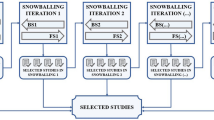Abstract
Requirements engineering (RE) is a crucial discipline when developing software systems. Applying RE activities successfully in the domain of business information systems (BIS) requires a deep and common understanding on how concepts of RE and business analysis are related. We consider this fact as being a challenge as currently no commonly accepted RE process exits that bridges the gap between these two disciplines. This results in unclear mappings and finally makes it difficult to align methods that exist in both areas. To tackle this challenge, we propose a reference issue model that aims to capture definitions and relations of the issues that are typically relevant in BIS development. In this context, we describe our followed research approach, an underlying meta-model as well as an exemplary instantiation and usage of the reference issue model. This contribution shall serve as a foundation for the integration of RE and business analysis as well as for the development of corresponding analysis approaches.
Access this chapter
Tax calculation will be finalised at checkout
Purchases are for personal use only
Preview
Unable to display preview. Download preview PDF.
Similar content being viewed by others
References
The Standish Group International: CHAOS Manifesto (2011), http://blog.standishgroup.com (last visited: January 18, 2011)
Gulla, J.A.: Understanding Requirements in Enterprise System Projects. In: RE 2004. IEEE (2004)
Etien, A., Rolland, C.: Measuring the fitness relationship. Requirements Engineering Journal, 184–197 (2005)
Weske, M.: Business Process Management: Concepts, Languages, Architectures. Springer, Berlin (2007)
Robertson, S., Robertson, J.: Mastering the Requirements Process. Addison-Wesley, Reading (1999)
Jeusfeld, M.A., Jarke, M., Mylopoulos, J.: Metamodeling for Method Engineering. The MIT Press, Cambridge (2009)
IEEE Computer Society: IEEE 830-1998 - IEEE Recommended Practice for Software Requirements Specifications. IEEE (1998)
IEEE Computer Society: IEEE 1233-1998 - IEEE Guide for Developing System Requirements Specifications Description. IEEE (1998)
IEEE Computer Society: IEEE 1362-1998 - IEEE Guide for Information Technology - System Definition - Concept of Operations (ConOps) Document Description. IEEE (1998)
BMI: Das V-Modell XT, http://www.v-modell-xt.de/ (last visited: February 14, 2012)
Scheer, A.-W.: ARIS - Modellierungsmethoden, Metamodelle, Anwendungen. Springer, Berlin (1998)
Hay, D.C.: Requirements Analysis: From Business Views to Architecture. Prentice Hall Professional, Upper Saddle River (2003)
Kruchten, P.: The Rational Unified Process. Addison-Wesley, Boston (2000)
Adam, S., Doerr, J., Eisenbarth, M., Gross, A.: Using Task-oriented Requirements Engineering in Different Domains. In: RE 2009, pp. 267–272. IEEE (2009)
Adam, S., Naab, M., Trapp, M.: A Service-Oriented View on Business Processes and Supporting Applications. In: CAiSE 2010. Springer, Berlin (2010)
Card Sorting, http://www.usability.gov/methods/design_site/cardsort.html (January 29 2012)
Alexander, I.F.: A Taxonomy of Stakeholders. Int. Journal of Technology and Human Interaction, IJTHI 1, 23–59 (2005)
Adam, S.: Providing Software Product Line Knowledge to Requirements Engineers – A Template for Elicitation Instructions. In: Regnell, B., Damian, D. (eds.) REFSQ 2012. LNCS, vol. 7195, pp. 147–164. Springer, Heidelberg (2012)
Nuseibeh, B., Easterbrook, S.: The Future of Software Engineering. In: ICSE 2000, pp. 35–46. ACM Press, New York (2000)
Wiegers, K.E.: Software Requirements. Microsoft Press (2005)
IEEE: Computer Society. Software Engineering Body of Knowledge. IEEE (2004)
Lamsweerde, A.: Requirements Engineering: From System Goals to UML Models to Software Specifications. John Wiley & Sons, Chichester (2009)
Kotonya, G., Sommerville, I.: Requirements Engineering: Processes and Techniques. John Wiley, New York (1998)
The Free Dictionary, http://www.thefreedictionary.com/ (last visited: January 01, 2012)
Riegel, N., Adam, S., Gross, A.: Addressing Requirements Engineering Challenges in the Context of Emergent Systems. In: RESS 2011. IEEE (2011)
Object Management Group: OMG’s Meta Object Facility (MOF), http://www.omg.org/mof/ (last visited: January 18, 2012)
Gross, A.: Perspective-based Specification of Efficiently and Effectively Usable Requirements Documents. In: Doctoral Symposium RE 2010, Sydney (2010)
Adam, S., Doerr, J., Ehresmann, M., Wenzel, P.: Incorporating SPL Knowledge into a Requirements Process for Information Systems. In: PLREQ 2010, Essen, pp. 54–66 (2010)
Wiegers, K.E.: First Things First: Prioritizing Requirements. Software Development 7, 48–53 (1999)
Riegel, N., Adam, S., Gross, A.: Addressing requirements engineering challenges in the context of Emergent Systems. In: RESS, pp. 6–9. IEEE, Trento (2011)
Object Management Group: Business Process Model and Notation (BPMN), http://www.omg.org/spec/BPMN/2.0/ (last visited January 18, 2012)
Soffer, P., Wand, Y.: Goal-Driven Analysis of Process Model Validity. In: Persson, A., Stirna, J. (eds.) CAiSE 2004. LNCS, vol. 3084, pp. 521–535. Springer, Heidelberg (2004)
Scheer, A.-W.: Wirtschaftsinformatik: Referenzmodelle für industrielle Geschäftsprozesse. Springer, Berlin (1994)
Champion, R.E.M., Moores, T.T.: Exploiting an enterprise model during systems’ requirements capture and analysis. In: ICRE 1996, Colorado Springs (1996)
Goknil, A., Kurtev, I., van den Berg, K.: A Metamodeling Approach for Reasoning about Requirements. In: Schieferdecker, I., Hartman, A. (eds.) ECMDA-FA 2008. LNCS, vol. 5095, pp. 310–325. Springer, Heidelberg (2008)
von Knethen, A.: Trace model for system requirements changes on embedded systems. In: IWPSE 2001, New York (2001)
Bubenko, J.A.J., Persson, A., Stirna, J.: User Guide of Knowledge Management Approach Using Enterprise Knowledge Patterns, deliverable D3, IST Programme project IST-2000-28401 HyperKnowledge, KTH, Schweden (2001)
Méndez-Fernández, D., Lochmann, K., Penzenstadler, B., Wagner, S.: A Case Study on the Application of an Artefact-Based Requirements Engineering Approach. In: 15th EASE, IET (2011)
Author information
Authors and Affiliations
Editor information
Editors and Affiliations
Rights and permissions
Copyright information
© 2012 Springer-Verlag Berlin Heidelberg
About this paper
Cite this paper
Adam, S., Riegel, N., Gross, A., Uenalan, O., Darting, S. (2012). A Conceptual Foundation of Requirements Engineering for Business Information Systems. In: Bider, I., et al. Enterprise, Business-Process and Information Systems Modeling. BPMDS EMMSAD 2012 2012. Lecture Notes in Business Information Processing, vol 113. Springer, Berlin, Heidelberg. https://doi.org/10.1007/978-3-642-31072-0_7
Download citation
DOI: https://doi.org/10.1007/978-3-642-31072-0_7
Publisher Name: Springer, Berlin, Heidelberg
Print ISBN: 978-3-642-31071-3
Online ISBN: 978-3-642-31072-0
eBook Packages: Computer ScienceComputer Science (R0)




